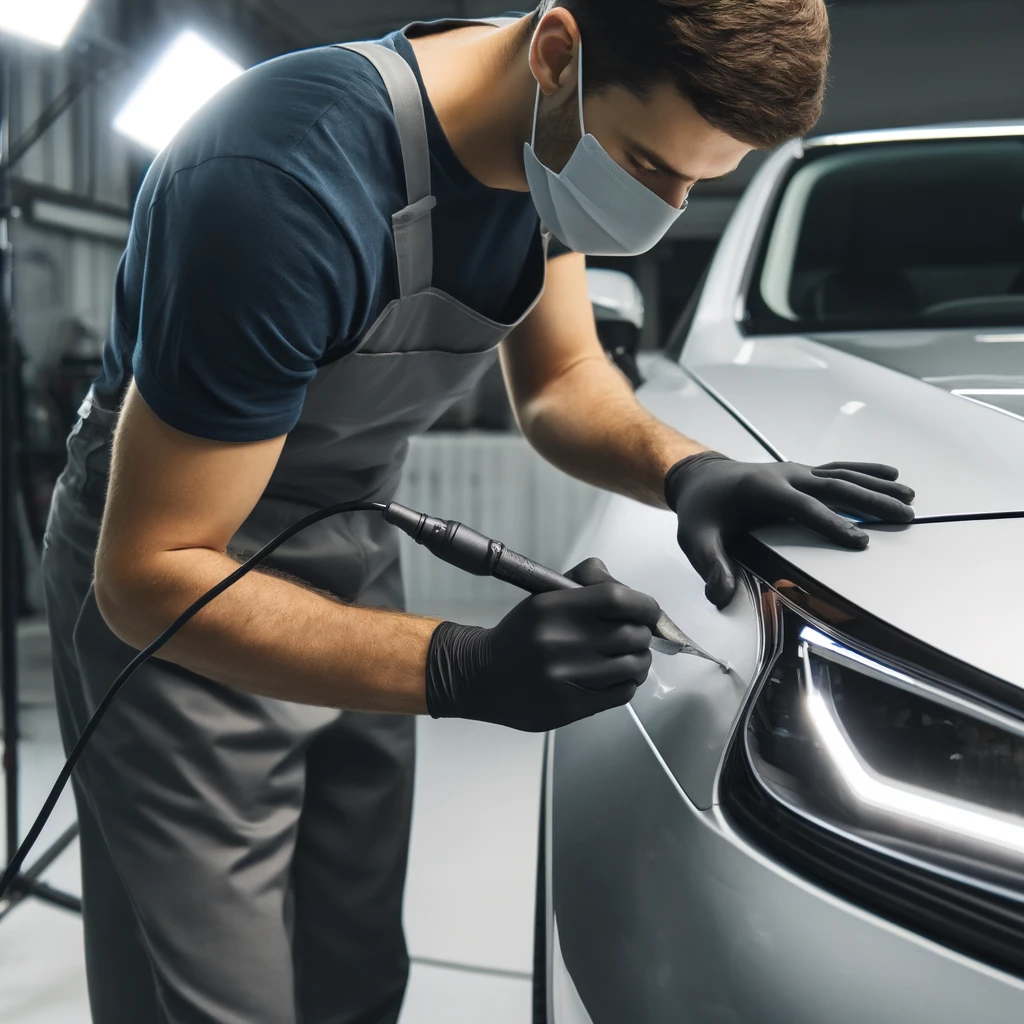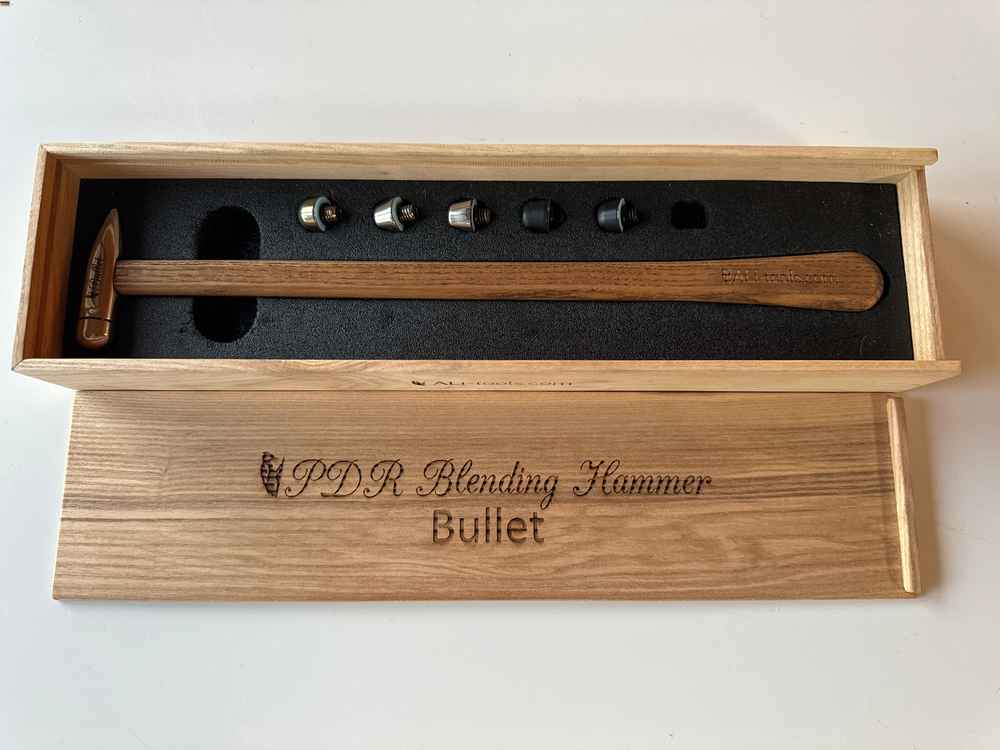PDR Techniques: How Long Does It Take to Repair a Dent?
How long does it take to repair a dent using PDR techniques? However, one of the most common questions people ask when considering PDR.
In this article, we will explore the factors that influence the duration of PDR repairs, break down the process step by step, and provide an in-depth understanding of what you can expect when opting for this method.
Paintless Dent Repair (PDR) has become one of the most popular and efficient methods for fixing dents on vehicles. Unlike traditional dent repair techniques that involve sanding, filling, and repainting, PDR focuses on restoring the original shape of the vehicle’s body without damaging the factory paint finish. This makes it a cost-effective, eco-friendly, and time-saving solution for car owners.
1. What is Paintless Dent Repair (PDR)?
Before diving into the time aspect, it’s essential to understand what PDR entails. PDR is a specialized technique used to remove dents, dings, and creases from a vehicle’s body without altering the original paintwork. Skilled technicians use specialized tools, such as rods, hooks, and levers, to gently massage the metal back into its original shape from behind the damaged area.
This method works best for small to medium-sized dents caused by hail, shopping carts, or minor collisions, where the paint remains intact. The process is non-invasive, preserves the vehicle’s value, and eliminates the need for costly repainting.
2. Factors That Influence the Time Required for PDR Repairs
The time it takes to repair a dent using PDR techniques can vary significantly depending on several factors. Let’s examine each of these factors in detail:
A. Size and Depth of the Dent
- Small Dents: Minor dents, such as those caused by hail or pebbles, are typically quicker to repair. A skilled PDR technician can fix a small dent in as little as 15-30 minutes.
- Medium-Sized Dents: Larger dents, such as those caused by shopping carts or door dings, may require more time, usually ranging from 30 minutes to 1 hour.
- Deep or Complex Dents: Dents that penetrate deeply into the metal or have sharp creases may take longer to repair, sometimes up to 2-3 hours or more, depending on their complexity.
B. Location of the Dent
The position of the dent on the vehicle plays a crucial role in determining the repair time:
- Easily Accessible Areas: Dents located on flat surfaces, such as the hood, roof, or trunk, are easier to access and repair quickly.
- Hard-to-Reach Areas: Dents near edges, seams, or areas with limited access (e.g., around headlights, taillights, or wheel wells) can be more challenging and time-consuming to fix.
C. Number of Dents
If your vehicle has multiple dents, the repair time will naturally increase. However, many PDR specialists offer discounts for multiple repairs, making it a cost-effective option for hail damage or widespread minor dents.
D. Skill Level of the Technician
The experience and expertise of the PDR technician also play a significant role in the repair time. A seasoned professional can complete repairs faster and with greater precision compared to someone who is still learning the craft.
E. Condition of the Paint
While PDR is designed for dents where the paint is intact, any chipped or cracked paint may require additional touch-ups, which can extend the overall repair time.
3. PDR Techniques Step-by-Step Breakdown
Understanding the PDR process can give you a clearer idea of how long each step might take. Here’s a detailed breakdown:
Step 1: Assessment
- The technician inspects the dent to determine its size, depth, location, and accessibility.
- They assess whether PDR is the appropriate method for the repair.
- Time Required: 5-10 minutes.
Step 2: Tool Selection
- Based on the assessment, the technician selects the appropriate tools for the job. These may include rods, picks, glue pullers, or specialized lighting equipment.
- Time Required: 5-10 minutes.
Step 3: Accessing the Dent
- The technician gains access to the backside of the dent. This may involve removing interior panels, headlights, or other components, depending on the dent’s location.
- Time Required: 10-30 minutes (depending on accessibility).
Step 4: Repairing the Dent
- Using precise hand movements and specialized tools, the technician massages the metal back into its original shape. This step requires patience, skill, and attention to detail.
- Time Required: 15 minutes to 2 hours (depending on the dent’s complexity).
Step 5: Final Inspection
- Once the repair is complete, the technician performs a final inspection under specialized lighting to ensure the surface is smooth and free of imperfections.
- Time Required: 5-10 minutes.
4. Average Timeframes for Common Scenarios
To provide a clearer picture, here are some average timeframes for different types of dents:
- Single Small Dent (e.g., hail damage): 15-30 minutes.
- Single Medium Dent (e.g., door ding): 30-60 minutes.
- Multiple Small Dents (e.g., hail damage): 1-3 hours.
- Large or Complex Dent (e.g., creased bumper): 2-4 hours.
- Full Hail Damage Repair (multiple dents across the vehicle): 1-2 days (depending on severity).
5. Why Choose PDR Over Traditional Methods?
While the time required for PDR repairs depends on various factors, it is generally much faster than traditional dent repair methods. Here’s why:
- No Sanding or Filling: Traditional methods involve sanding down the damaged area, applying filler, and repainting, which can take several days.
- No Drying Time: Since PDR doesn’t involve painting, there’s no need to wait for paint to dry.
- Immediate Results: Once the PDR process is complete, the vehicle is ready to drive immediately.
6. Tips for Reducing PDR Repair Time
If you’re looking to minimize the time spent on PDR repairs, consider the following tips:
- Choose a Reputable PDR Technician: Experienced professionals can complete repairs faster and with better results.
- Address Dents Early: Smaller dents are quicker to fix than larger ones that may worsen over time.
- Prepare Your Vehicle: Remove personal belongings from the interior to allow easy access for the technician.
7. Conclusion
The time it takes to repair a dent using PDR techniques varies based on the size, depth, location, and number of dents, as well as the technician’s skill level. On average, most minor dents can be fixed within 30 minutes to an hour, while more complex repairs may take several hours. Compared to traditional methods, PDR offers a faster, more cost-effective, and environmentally friendly solution for restoring your vehicle’s appearance.
If you’re considering PDR for your vehicle, consult a qualified technician to get an accurate repair time and cost estimate. With its ability to deliver quick and high-quality results, PDR is undoubtedly one of the best options for keeping your car looking its best.
By understanding the intricacies of the PDR process and the factors that influence repair time, you can make informed decisions about maintaining your vehicle’s appearance. Whether you’re dealing with a single dent or widespread hail damage, PDR provides a reliable and efficient solution that saves both time and money.
PDR Tools Product Categories










